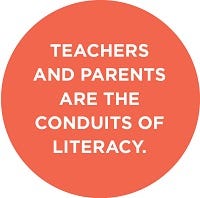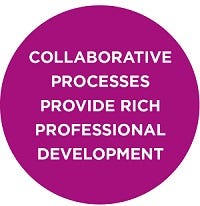Refining Reading Instruction
The scores on the 2017 National Assessment of Educational Progress show that only 40% of Maryland fourth graders read at or above a “proficient” level.

“We need accessible experts who have a deep understanding of research and best practices in literacy instruction, and we need to grow those experts in our schools and share what we know with our communities.”
Kellie Hall is an instructional resource teacher at Hollywood Elementary School in St. Mary’s County. She is a voracious reader of literacy research, a LETRS Classic trainer, and a Level 1 Certified Wilson Dyslexia Practitioner.
While Maryland students fare slightly better as readers than the national average, slow growth in reading proficiency over the past decade — and media attention to this struggle — have prompted educators and community members across the country to ask tough questions about how to improve reading instruction.

More than anyone, educators are aware of a multitude of outside factors that impact their students’ reading achievement. Many students are spending more time playing video games than reading or even having conversations outside of school. And their unmet physical needs, lack of connected relationships or motivation to succeed in school, and increasing difficulties with social-emotional behaviors make maintaining a collaborative classroom environment very difficult. It is our responsibility to continue to identify and speak out about these issues.
Yet despite these challenges, if we believe the research telling us that over 90% of the population is capable of learning to read proficiently, then we are all responsible to commit to improving literacy instruction. Emily Hanford’s radio documentary “Hard Words” has helped advance conversation and community action on this topic. If you missed it, now is a good time to listen.
Scientific research has shown how children learn to read and how they should be taught. But many educators don’t know…www.apmreports.org
This legislative session, Maryland passed the Ready to Read Act requiring literacy screenings for all kindergartners in the state of Maryland beginning with the 2020–2021 school year. The most important work to improve literacy in Maryland could be the instructional response to these screenings.

There are many steps required to transition from data collected through screenings to improved reading instruction. Trained educators must not only know how to administer the screening instrument, but also understand the purpose and methodology to effectively collect, analyze, and interpret the data. Years ago, when I was teaching kindergarten, I was appalled that completing a reading screening required me to use a stopwatch to time my kindergartners as they attempted to name as many letters as possible in one minute. Now that I better understand the assessment as a screening tool, I know that evaluating automaticity by timing student performance makes the screening tool far more effective and reliable as a predictor of future reading success.
Kids aren’t being taught to read, says senior education correspondent Emily Hanford of APM Reports, and that’s because…blogs.edweek.org
The data resulting from reading screenings often leads teachers and parents to over-identify potential reading difficulties. It’s the trade-off we make for a sensitive screening instrument that can identify students for follow up with a diagnostic assessment.
In my school, we meet in teams, which may include grade-level teachers, special educators, instructional resource teachers, and administrators to analyze the results of initial screenings. For students at risk for reading difficulty, we review additional data to determine if students need support with specific skills. The team makes decisions about instructional programs, who will provide the supplemental instruction, and how we will monitor student progress.
This process requires a high level of diagnostic skill, as well as the staff and technical expertise to carry out instruction, monitor, document student performance, and meet regularly. This collaborative process provides rich professional development for all.
Maryland schools will soon have universal screening data from kindergartners across the state. Research-based curricular materials have been purchased, but the reality is that educators and parents are the conduits of literacy. We can’t give a test or purchase a program or product to fix this literacy problem. We need accessible experts who have a deep understanding of research and best practices in literacy instruction, and we need to grow those experts in our schools and share what we know with our communities.

